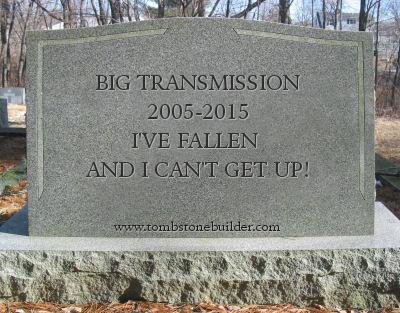Recently,
The WV PSC found the petition "premature" because the companies have not yet filed an action to purchase more generation.
The PSC previously rejected a motion by the same parties to require the companies to issue an RFP for new generation it claimed would be needed in its Integrated Resource Plan last year.
The PSC contends that the requirement to file an Integrated Resource Plan does not allow the PSC to approve or reject a utility's plan, therefore it must powerlessly follow a utility's lead. The PSC also contends that the companies' promise to issue an RFP for new generation that was part of its settlement in the case that allowed its last inter-company purchase of generation has not been triggered. The WV PSC sits trussed up on the floor like a prisoner, unable and unwilling to act in the best interests of West Virginia's electric consumers, completely useless.
It's word soup and double standards that has the PSC ineffectually sitting on their hands. The last time the companies needed to purchase generation in an internal transaction (Harrison), they claimed there just wasn't time to issue an RFP because the need was way too urgent. If that was the case, then the utilities had not planned correctly. The settlement that allowed the purchase of Harrison required:
If the Companies determine in any annual PJM Base Residual Auction (“BRA”) that their combined capacity obligations for the delivery year covered by the BRA (“Delivery Year”) exceed the Companies’ owned or contracted-for capacity resources for the Delivery Year by 100 MW or more (“Capacity Shortfall”), then not later than the end of the calendar year following the BRA, the Companies will develop an RFP for capacity resources to address the Capacity Shortfall and submit the RFP to the Commission and the Parties for their review and comment. The RFP will allow proposals from both supply-side and demand-side resources.
However, the companies turned around and filed an Integrated Resource Plan contending a generation shortfall. In that filing, the companies used a different method to calculate the shortfall that did not depend on PJM's Base Residual Auction.
Mon Power’s Long Term Load Forecast indicates a capacity shortfall starting in 2016, with the shortfall exceeding 700 MW by 2020 and extending to over 850 MW by 2027.
And the WV PSC let them get away with it! If the PSC wants to use the companies' method to calculate generation needs, then it should never have approved the settlement stipulation that used PJM's method. Conversely, if the PSC approved the stipulation that used PJM's method for calculating generation needs, then it should never have allowed the companies to use a different method in its Integrated Resource Plan. They simply can't have it both ways! Either they have a generation shortfall, or they don't. The WV PSC needs to quit dithering and sitting on its hands.
FirstEnergy has made it perfectly clear that it intends to make Mon Power and Potomac Edison purchase the Pleasants power station.
We will continue to seek opportunities both within the competitive realm and the states to further de-risk the business and convert megawatts from competitive markets to a regulated or regulated-like construct.
We also plan to work with the West Virginia Public Service Commission when they are ready to address the generation shortfall included in Mon Power's integrated resource plan.
So we previously filed the IRP. It showed a need for generation going out a couple of years from now. But that case right now is concluded. So there is nothing that would, unless we were to file something, initiate something, that would come out of that case. So we would be looking as we go forward and continue to monitor the forecast for that company to see how we might want to present something consistent with the IRP in terms of bringing additional generation to Mon Power.
Michael Lapides - Goldman Sachs & Co.
Got it. So there's no formal like RFP process that's about to kick off or that will be undertaken in 2016 or 2017?
Leila L. Vespoli - Executive Vice President, Markets & Chief Legal Officer
Correct. There's no time line associated with that. We would initiate it when we believe it to be the appropriate time.
The WV PSC needs to stop behaving like FirstEnergy's dog on a leash and start doing its job as a regulator tasked with balancing public and private interests to effectively serve the state's consumers. Maybe the political appointees at the PSC need to find out what their job actually entails? I think they all need to read this book.
The decisive regulator makes decisions (1) required by the public interest, (2) when the public interest requires it, (3) regardless of discomfort felt, (4) using a logical method and an active approach.
At this time, however, we do not see any short-term solutions to the current challenging market situation. Longer-term, we do not believe competitive generation is a good fit for FirstEnergy and are focused regulated operations. And we cannot put investors and our company at risk as we wait for the country and PJM to address the issues with the current construct.

 RSS Feed
RSS Feed